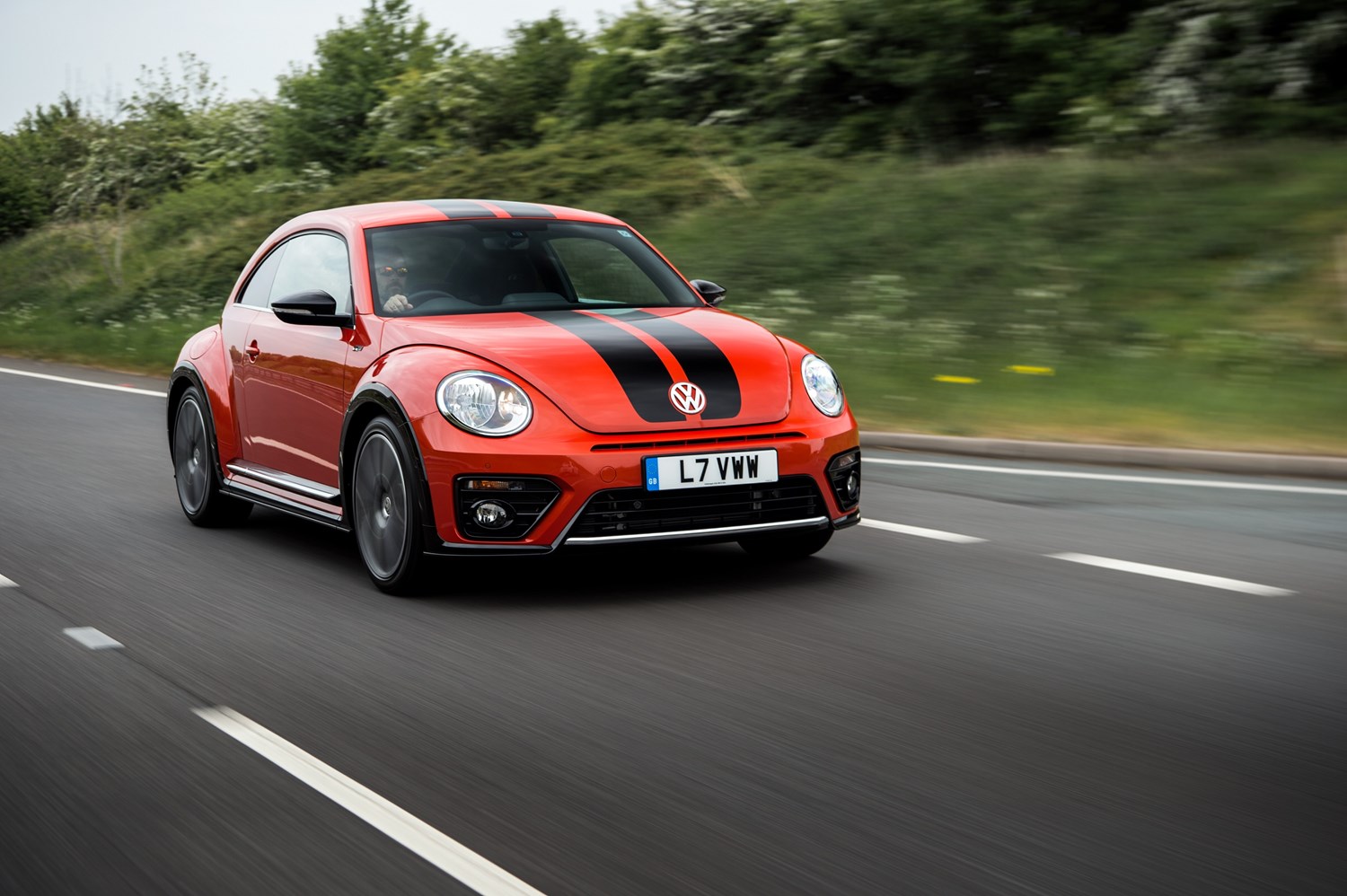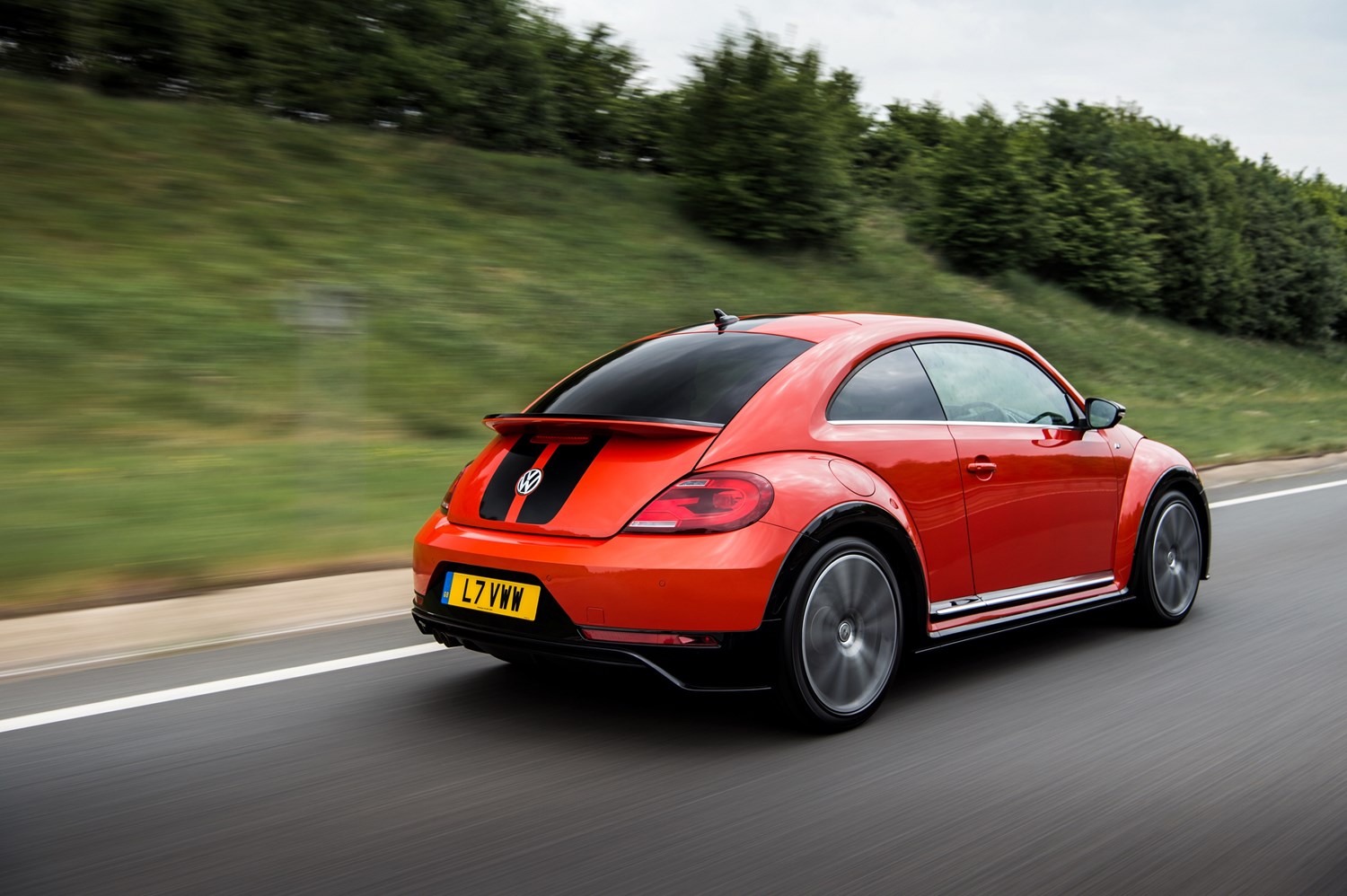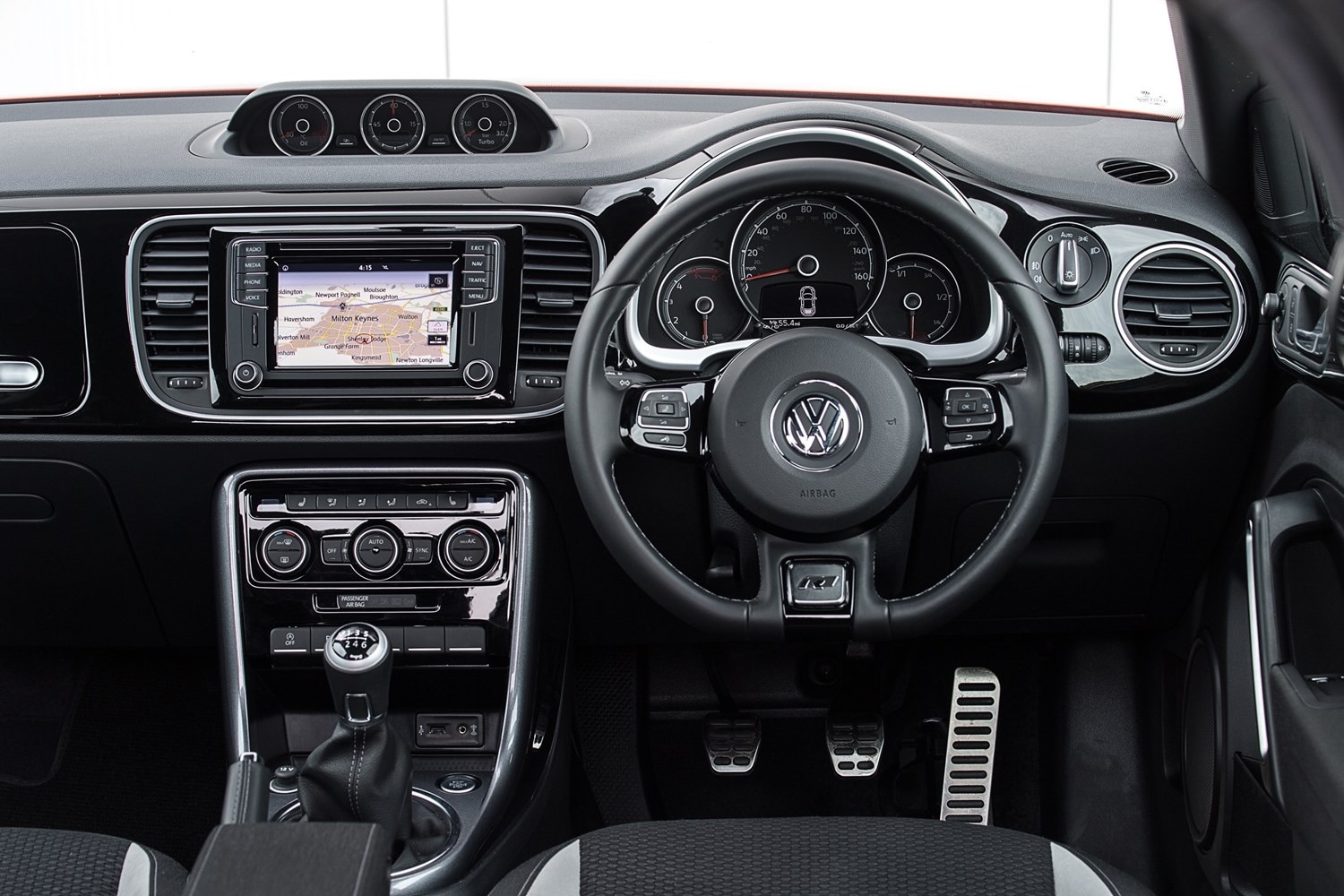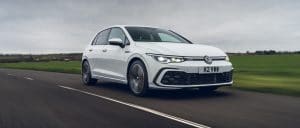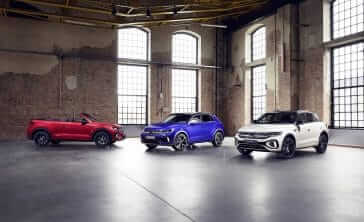Model review
Long before BMW’s version of the Mini and Fiat’s recreation of its 500, Volkswagen arrived on the motor show circuit with a new take on the Beetle, the car that started it all for the German marque.
Initially debuting at the 1994 Detroit Motor Show as the Concept One, it garnered a warm response from the press and public alike, so much so that a production version would arrive in 1997.
Based on the MKIV Golf, the first ‘New Beetle’ – which, by virtue of not having a hatch boot, is a coupe – was initially successful and well-liked. However, it seemingly over-stayed its welcome, finally being put out to pasture in 2011, by which time the badge felt largely irrelevant.
A second-generation of the modern-day Beetle came in 2012, with newer underpinnings and a vastly updated look, but it didn’t leap off the shelves, and the end of the car’s production run was announced for July 2019. Due to the popularity of the original Beetle in foreign markets, this will mark the first time since 1947 that the model wasn’t being built and sold to customers.
While many purists will decry the New Beetle for being front-wheel drive and front-engined – unlike the original – both generations of Beetle still serve as a quirky alternative to a three-door Volkswagen Golf.
Latest model
Debuting in 2011, the ‘A5’ version of the Volkswagen Beetle did an effective job of retaining some of the styling identity of the original Beetle, while modernising the silhouette and its details.
Dubbed ‘A5’ due to sharing the platform of the same name with the MKV and MKVI Golf variants, the underpinnings of the car were also significantly newer than the previous generation model, which had been on sale almost 15 years by the time it was pulled from production.
Over its lifetime it gained several special edition variants, including a Herbie ‘The Love Bug’-inspired 53 Edition for the Spanish market, and a sporting R-Line trim. A Final Edition model was announced to mark the conclusion of production for the US market, but the Beetle is no longer available as a new car in the UK.
The second-generation car placed a particular focus on colour to create a vibrant feel, with the option of body coloured interior trim in the Design spec, and a range of wheel options from modern designs to retro shapes.
Value for money
The very lowest price in the market for the first-generation Beetle is as low as £500, though these models will have between 100,000 and 150,000 miles on the clock, and will typically not be in a particularly good condition.
Post-2005 cars benefitting from a facelift – and the convertible variants available from 2003 onwards - tend to be found from around £1,100, though again, these models are high-mileage.
The best of the first-generation Beetles can be had for as little as £1,500, which can net you a post-facelift car with less than 70,000 miles on the clock. Examples of the convertible in a similar condition can be had for roughly £2,500.
The market for second-generation beetles starts a little south of £6,000, which will net you the near-ubiquitous Design trim variant, with as little as 70,000 miles on the clock.
Meanwhile, sub-50,000-mile models can be had for as little as £7,500, which is also roughly where the bottom end of the market is for the particularly rare convertible variants.
Nearly-new models on 18 plates can be had from £15,590, though this doesn’t represent too big of a saving from the £19,000 base price that existed while the car was new; however, these cars also represent the last chance to buy a near fresh-from-the-factory Beetle, so if you’re keen on the model, it may be worth the cash.
Looks and image
The Beetle’s design brief session was probably one of the simpler ones to attend. The two primary goals were to emulate the old car’s general shape, with a modern shape and a cute overall look. And, on the balance of things, the brief was met nicely.
The first-generation car is a slightly past-it take on new-retro – yes, that is possible – and it now sits in a bit of a grey area between looking truly dated and vaguely modern; that said, a good one will certainly have aged better than a MKIV Golf if you care about styling, but it’s one of those cars that particularly suffers aesthetically for not being looked after.
The 2011 onwards Beetle still looks the part, even though it is the better part of a decade old. Surprisingly, this Beetle can pull off a tracksuit; the sporting R-Line models are particularly smart, even if they minimise the histrionics somewhat.
Behind the wheel, there are few surprises. It drives like a Golf for the most part, and that is to say that it provides few surprises, with an equal lack of drawbacks. There are some differences compared to the car on which it is based, including a slightly firmer suspension and heavier steering, both of which exist as part of a mission statement to give the Beetle a sportier edge.
The heavy steering feels a little out of place on a car whose natural backdrop is a town or cityscape, and urban roads can get the better of the suspension, but overall, the car manages day-to-day life well.
Space and practicality
At 310 litres, the second-generation ‘new’ Beetle’s boot is good enough to be practical, but you won’t find it challenging any of the top hatchbacks for practicality courtesy of its sweeping shape. The rear seats can be folded for optimum practicality if you require more space.
Speaking of the rear seats, they will cater for a pair of adults, though headroom and overall space is more of an issue for rear passengers than it would be in a typical hatchback, which is – again – simply another symptom of this car being style-led.
The interior is stylish, with ergonomics inspired by the original Beetle, and a high quality feel that far exceeds that of the first-generation ‘new’ version.
Engines
The second-generation Beetle was available with a pair of petrol engines, plus a 2.0-litre diesel available in two output levels.
The base engine was the smaller, 104bhp 1.2-litre petrol unit. A 1.4-litre petrol was also available with 148bhp on tap. In the diesel stakes, two versions of a 2.0-litre diesel power plant were put into action. The less powerful version produces 108bhp, while the top-line diesel also generates 148bhp.
The 104bhp petrol engine was available with a six-speed manual gearbox or a seven-speed DSG automatic gearbox. Meanwhile, the 148bhp, 1.4-litre unit was exclusively mated to the six-speed manual.
On the diesel side, the 108bhp litre version of the 2.0-litre diesel was available with either a five-speed manual or a seven-speed DSG auto ‘box. Meanwhile, the more powerful diesel could be had with either a six-speed manual or six-speed DSG.
Running costs
As is so often the case, diesel engines are the way to go if you’re expecting to cover serious miles in your car.
The most efficient diesel engine – the 108bhp version – is capable of 65.7mpg. The more powerful diesel is also pleasingly efficient, and capable of up to 61.4mpg, though this can come down to 56.5mpg depending on trim. For example, the beach-inspired Dune spec is slightly less frugal at 56.5mpg.
On the petrol side, the most efficient engine is – naturally – the lower-powered, 1.2-litre version. Depending on trim, and therefore weight, it will be able to achieve 54.3mpg. The Dune version is capable of 51.4mpg.
The sole 1.4-litre unit can achieve 47.9mpg.
The insurance bracket for the Beetle is quite wide-ranging, with some scoring as low as 13E, and the high water mark being 21E for the R-Line and Dune versions of the 2.0-litre diesel.
Things to look out for
The outgoing Beetle seems to have got away without too many issues over its lifetime, though there have been a few recalls that the car has been associated with.
Diesel examples with stop-start equipped – built between 1 March 2011 and 30 November 2011 – may be susceptible to some overheating issues. Certain cars produced between 1 October 2011 and 1 August 2013 were recalled due to a rear axle issue that caused a loss of steering, while some Beetles produced between 1 April 2014 and 31 August 2014 were susceptible to fires by way of a fuel leak.
For any of these recalls, as well as the marque-wide diesel NOx emissions issues, it is worth checking that all mandatory work has been done.
In addition, Volkswagen’s DSG gearboxes have often been known to be unreliable, so pay close attention to its function during a test drive; any untoward noises from the ‘box should be seen as a red flag.
Rivals
For the most part, the Beetle’s hit list of rivals is the same as the Volkswagen Golf on which it is based; this means the hatchback world, encompassing cars such as the Ford Focus and Renault Megane, would be the most common rivals.
Another rival to consider if you’re drawn in by the retro aesthetics of the Beetle is the more practical Mini range. Lastly, if the appeal of the Beetle is to have a car similar to the Golf with better styling, you may also want to consider Volkswagen’s Scirocco or the Audi A3, both of which share a platform with the German marque’s signature hatchback.
Depreciation
Of course, with new Beetles no longer on sale in the UK, depreciation may not be as big of an issue.
However, the car seems to hold its value well. If you were to purchase a well-specced 18-plate Beetle today, it will still be comfortably worth over half of what you paid in three years time. This is partly down to its relative niche status, meaning there aren’t too many on the road; it's iconic – and now sadly departed – nameplate doesn’t hurt residuals, either.
